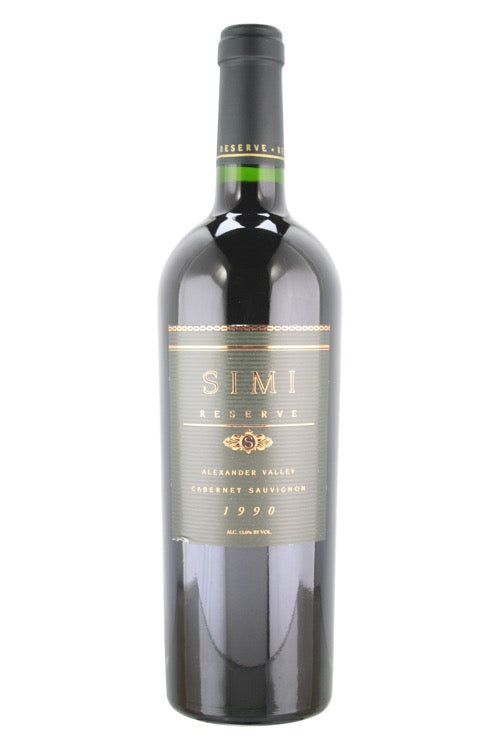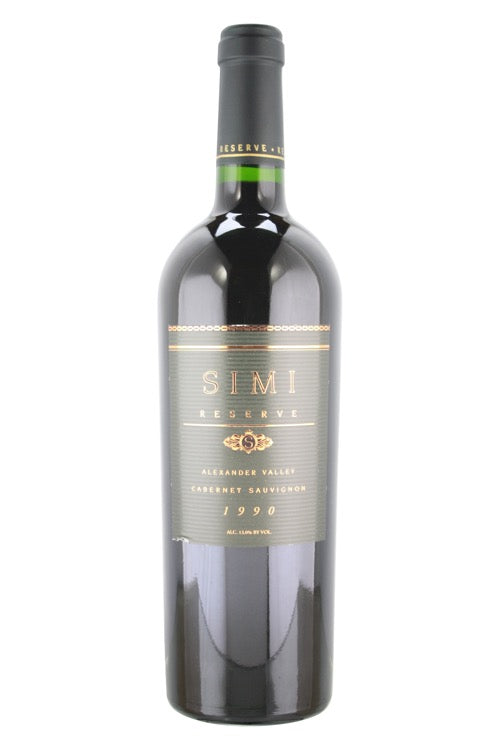1
/
of
1
Simi Alexander Valley Cabernet Sauvignon - 1990 (3 Liter)
Simi Alexander Valley Cabernet Sauvignon - 1990 (3 Liter)
Regular price
$299.99
Sale price
$299.99
Regular price
$369.99
Unit price
/
per
Although this wine will not be released until the end of the year, readers should be making plans to latch onto a few bottles. A superb Cabernet Sauvignon, it appears to be the finest yet produced by Simi. An extremely saturated dark purple color suggests a wine of formidable proportions. A tight but promising bouquet offers black-cherry, vanillin, and spicy/oaky scents. Ripe and full-bodied, with superb concentration, and layers of rich, opulent cassis fruit gently infused with toasty new oak, this long, lavishly rich wine possesses moderate yet unobtrusive tannin in the finish. It is a blockbuster Cabernet that should drink well young and evolve for at least two decades.
Robert Parker - 95 points
Robert Parker - 95 points
Share :

- varietal
- Region
- Sub - Region
- Type
- Reviews
Product Review
Although this wine will not be released until the end of the year, readers should be making plans to latch onto a few bottles. A superb Cabernet Sauvignon, it appears to be the finest yet produced by Simi. An extremely saturated dark purple color suggests a wine of formidable proportions. A tight but promising bouquet offers black-cherry, vanillin, and spicy/oaky scents. Ripe and full-bodied, with superb concentration, and layers of rich, opulent cassis fruit gently infused with toasty new oak, this long, lavishly rich wine possesses moderate yet unobtrusive tannin in the finish. It is a blockbuster Cabernet that should drink well young and evolve for at least two decades.
Product Score
95
Cabernet Sauvignon is one of the most prominent dark-skinned grape varieties except Merlot in terms of area under vines, but which comprises our largest selection of wines. Grown in just about every wine producing region and climate, Cabernet Sauvignon can express a huge range of aromas, from green peppers in cool climates through to dark jammy fruit in hot regions. Common aromas include blackcurrants, mint, graphite, and forest floor, to name a few. Maturation in small oak barrels can develop a complex range of aromas from cedar wood, cigar box and tobacco to eucalyptus and undergrowth. Cabernet Sauvignon’s success is partly due to its ability to adapt to a range of soils and climates. It is the main constituent of the Bordeaux blend in the revered communes of Pauillac, St. Estephe and St. Julien, and has achieved equal success in California’s Napa Valley. It is grown extensively throughout Southern Australia, with some outstanding examples from the Terra Rossa soil of Coonawarra. Cabernet Sauvignon also plays an increasing role in Tuscany, Italy, where it is blended with native varieties such as Sangiovese to produce the Super Tuscans.
California is one of the most diverse wine producing regions of the world. Although it has a history spanning over 200 years, it has experienced most of its growth in the last fifty years. The regions of Napa Valley and Sonoma County have become as renowned as France’s Bordeaux and Burgundy. While Cabernet Sauvignon, Pinot Noir, and Chardonnay are by far the most popular fine wine varieties, producers in the Golden State have also experimented with an unparalleled array of diverse varieties, including Zinfandel, Syrah, Nebbiolo, Sangiovese, and Tempranillo.
With a wide range of climate and soils reflected in its 13 AVAs (as of 2012), Sonoma County could almost be considered a whole wine country within itself. It is one of the largest wine regions and significantly overshadows Napa in terms of quantity produced. The main AVAs include: Alexander Valley and Dry Creek, known for good Sauvignon Blanc and Zinfandel; Knights Valley and Sonoma Mountain, for its Cabernet Sauvignon; and Russian River Valley, Sonoma Coast, Sonoma Mountain, for their Chardonnay and Pinot Noir.
Red wine is wine made from dark-coloured grape varieties. The color of red differs based on the grapes variety or varieties used.Interestingly, black grapes yield a juice that is greenish-white. The actual red color comes from anthocyan pigments (also called anthocyanins) from the skin of the grape (exceptions are the relatively uncommon teinturier varieties, which produce a red colored juice). Most of the production centers around the extraction of color and flavor from the grape skin.


